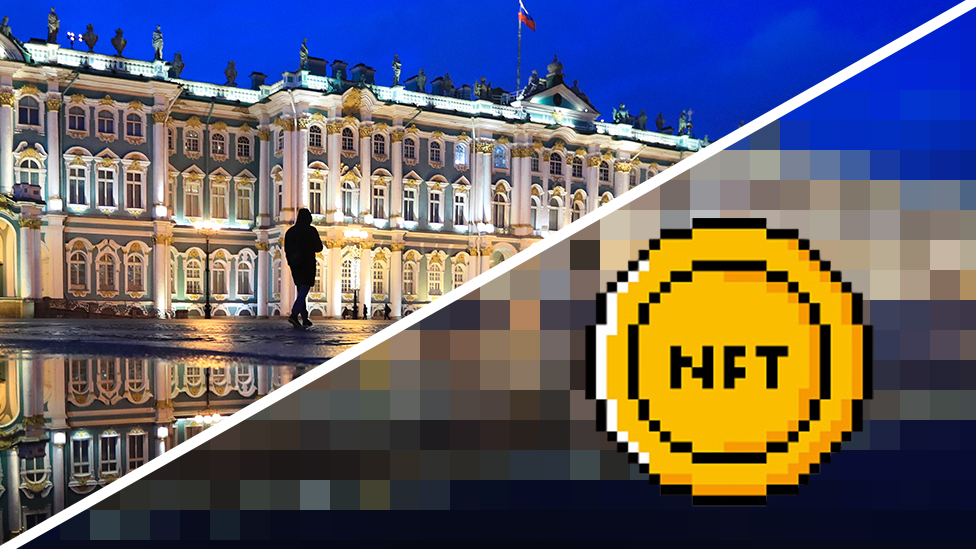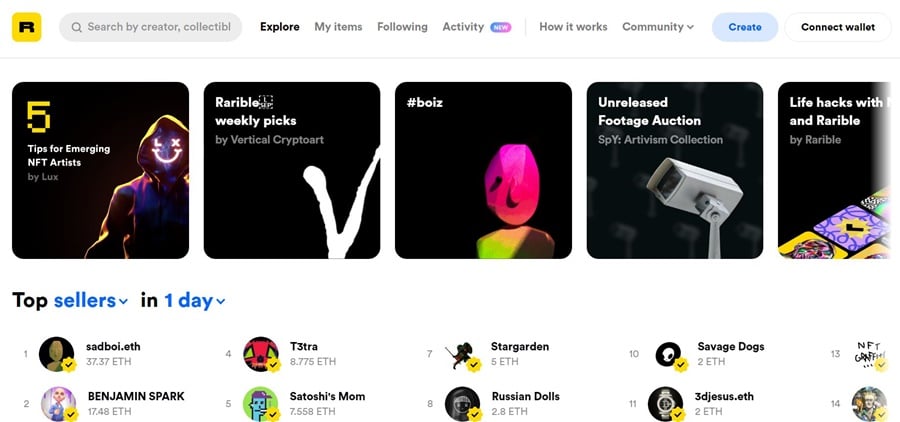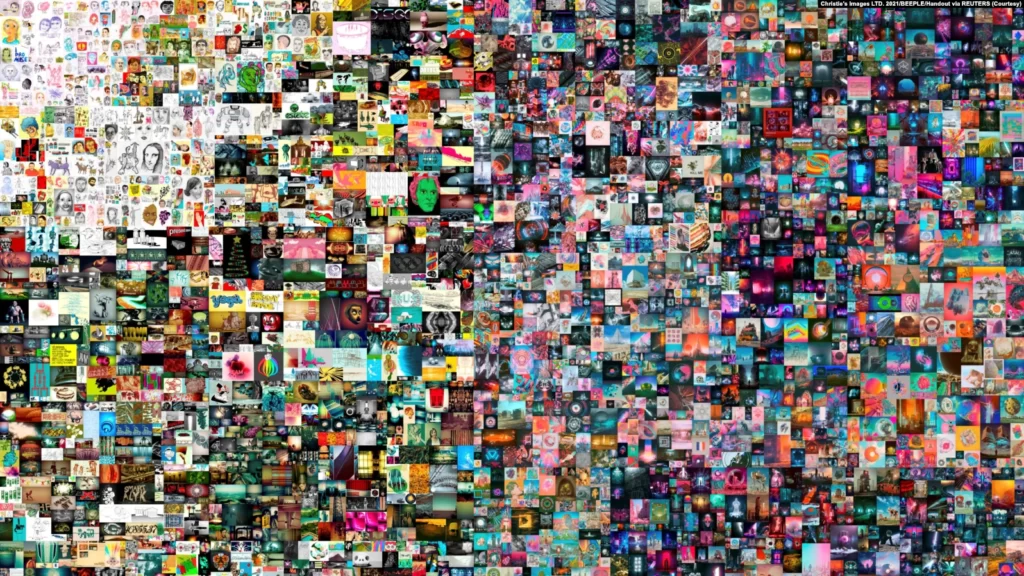NFT is a bright new manifestation of the crypto-economy that has excited the minds of traders and news around the world. Among the significant events, in 2021 the Hermitage planned to hold an exhibition of works made in the NFT format. Earlier, Twitter founder Jack Dorsey sold his first tweet in the same format for $2.9 million, and artist Mike Winkelmann received a record $69 million for his NFT painting.

What is NFT?
The abbreviation NFT (non-fungible tokens) means “non-fungible token”. To understand tokens, it is necessary to understand in what environment they exist – in this case, in the blockchain.
Blockchain is a database that is simultaneously stored on a huge number of computers. In the traditional model of the Internet, all devices are connected to centralized nodes (in the form of servers or Internet providers), while the blockchain works in a different way. It does not provide for any central nodes; in its system, all devices simultaneously store all the information published in the blockchain.
Each NFT is unique and exists in a single copy. It cannot be divided, and all information about its author, buyer and all transactions with it is securely stored in the blockchain. In other words, an NFT is a digital certificate attached to a unique object.

What can be sold in the form of an NFT?
In fact, anything. Music, images, text, video, 3D models – that is, any digital product that claims to be unique. But the technology has received the greatest distribution in the field of digital art and virtual spaces.
Particular attention is paid to NFT by collectors, gamers (who are interested in in-game items: skins, weapons, trading cards, etc.), as well as artists and art lovers. Moreover, art in all its manifestations.
Singer Grimes (who is also the mother of a boy named XÆA-12, the child of Elon Musk) sold her drawings in NFT format for $5.8 million, and Russian artist Pokras Lampas sold a projection of his drawing at the Chirkeyskaya HPP for $28,000.
DJ 3LAU became the first musician to put his album up for sale, receiving $11.6 million for it. Other musicians who also sold their creations in the form of NFTs include Kings of Leon and singer The Weeknd.
The most famous was the sale of the painting “Everydays: The First 5000 Days” by artist Mike Winkelmann (known as Beeple). A JPG file consisting of all the images that the artist painted every day for five thousand days sold for $69.3 million. Winckelmann’s painting was the first NFT work sold in the history of Christie’s auction house.

Non-fungible tokens are of interest not only to artists, but also to major publications. The Times magazine put up for sale three of its covers (including the iconic “Is God Dead?”), and The New York Times sold its column with the telling title “Buy this column on the blockchain!”.
As NFT lots, not only music tracks or drawings are exhibited, but also models. For example, Canadian artist Krista Kim was able to raise $520,000 for a minimalistic model of a house designed in Martian scenery.
I have NFT. What should I do now?
There are many platforms that work with NFTs. Some are highly specialized marketplaces and differ in the categories of objects sold: somewhere you can find only items for video games, somewhere – digital art.
Well-known services include OpenSea, Rarible, Niftygateway and SuperRare. The platforms take a commission in token-ethers (the exchange unit of the Ethereum cryptocurrency – based on its infrastructure, non-fungible tokens were created). The size of the commission varies, but is usually calculated in tens of dollars.
Some services immediately generate a token from the uploaded file (and immediately charge a fee), while others create NFTs only at the time of sale.
Haven’t heard of NFTs before?
Although blockchain and cryptocurrencies have been around for years, NFTs are a relatively new phenomenon.
Tokens of this kind were created back in the mid-2010s, but the first NFT projects became available only in 2017. The popularization of NFTs, with which people now earn millions of dollars, was originally the merit of CryptoKitties, a game in which you can breed virtual cats. The game became extremely popular, and the amounts for which you can sell digital pets exceeded $100,000.

Professor Donna Redel shared her opinion on the development of NFT – she previously served as the managing director of the World Economic Forum, and today she is an expert on blockchain and cryptocurrencies at Fordham University.
The “rebirth” of NFT in 2021 is closely related to progress in the blockchain infrastructure itself.
“We have watched the ongoing development of the blockchain,” says Redel. – People took the bitcoin system as a basis, this is how the Lightning protocol appeared. We also observed the development of technologies based on the Ethereum blockchain platform. People were building rather than shopping.”
Redel notes that the development of blockchain technologies and the emergence of NFT services (many of which appeared in 2021) coincided with other processes in society and the economy. A large number of new players have entered the stock markets (and the cryptocurrency markets), including non-professional traders and amateur investors.
The democratization of the stock market (the apotheosis of which was the situation around the shares of Gamestop) coincided with the pandemic: being in self-isolation, alone with their devices, many people began to pay attention to new financial instruments.
The informational noise around them also played a certain role in the “revival” of NFTs. The appearance of big names in the news headlines in the neighborhood of the NFT could not help but draw attention to them. It’s one thing when NFTs are talked about in narrow gaming communities, it’s another thing when celebrities like Elon Musk, Banksy or Paris Hilton issue their tokens.
I bought a JPG picture in NFT format. Do I have full rights to it now?
Probably not. This is the main reason for criticism of the new type of tokens: after all, owning an NFT does not guarantee full rights to this item.
Take, for example, the simple viral Nyan Cat video, which is an animation of a cat flying through the sky, leaving a rainbow trail behind it. For an NFT with an animated cat, the buyer paid its creator $580 thousand. However, if you wish, you can still watch this video on YouTube, download it to your smartphone or set a screenshot from it as a screensaver on your desktop, without fear that the owner of the NFT will require you to pay.
The example mentioned by Redel is the NBA Top Shots, which is the name given to spectacular moments in NBA games. That is, it is possible to purchase an NFT, to which a ball throw by James LeBron or a slam dunk by Michael Jordan will be attached.
“You can buy this ‘moment’, but you don’t own the rights to it and you can’t dispose of it outside the blockchain,” says Professor Redel. “It cannot be borrowed, cannot be divided into its component parts. You can only do what is allowed by the owners of these “moments”, namely, you can buy, keep in your collection and you can sell.
It can be assumed that other “moments” can exist in a similar form. In theory, film companies will be able to sell clips from your favorite films in the form of NFTs – that is, you can become the sole owner of a token tied to the final scene in Titanic or the dance from Singing in the Rain. However, you will not receive royalties at all every time this film is shown, but you can earn money by reselling these scenes.
If NFT buyers don’t own the items, then why do people buy them?
While we can indeed download the files we like, their exclusivity – and not their availability on the Internet – is what carries the main value. The blockchain securely records the fact that it was you who purchased a certain unique item, previously created by its original owner, the data about which is also stored in the blockchain.
For collectors, gamers and art lovers, such purchases are akin to acquiring original paintings. It is possible, in theory, to purchase the original of Kazimir Malevich’s Black Square, but the very fact of this purchase (as well as its cost) will be significantly different from if we simply hung a reproduction of this painting on the wall.
But NFTs can be seen as more than just part of a collection or something of value in terms of emotional experience, nostalgia, or the opportunity to show off a unique acquisition. The ability to resell NFTs embedded in their smart contracts opens up a huge amount for speculation.
However, as Redel notes, if we have a good idea of what the value of buying art objects – for example, paintings by Picasso or Monet – can be, then in the case of NFTs, which represent a relatively new market in the field of creativity and art, many questions remain.
“Let’s say that six months ago I purchased one NFT for three Ether worth $600 each. Today, I would give $1,800 for each Ether due to a significant price increase. The question arises: has the purchased piece of art become more valued, or is it just the cryptocurrency that has become more valued? What is the investment itself: in the art itself or in the relationship between this art and the cryptocurrency exchange rate?
In this regard, the question of what the price of NFT will be over time is inevitable: will the buyer be guided by the amount paid during the last purchase of the token, or will he pay the amount in accordance with the new rate of the cryptocurrency.
Does NFT have a future?
The market for non-fungible tokens is developing extremely fast and over the past few years, blockchain technology and infrastructure has undergone significant changes. However, today there are still many questions, according to what rules the NFT market can (and should) operate and in what areas non-fungible tokens can be used.
For example, one of the potential applications of NFT in the future is the recording of unique documents in the blockchain. Due to the security of the blockchain, certificates and various documents can be issued in NFT format, potentially helping to eliminate the risk of forgery.
NFT is already having some impact on the formats for creating and distributing content, art, and art.
“It’s kind of a new environment for creativity,” says Professor Donna Redel. – The current situation can be compared with the period when photographers switched from film cameras to digital; It is appropriate here to recall the rejection with which many treated the new photographic equipment.
According to Redel, NFTs have the potential to influence not so much creativity itself, but the formats of interactions associated with it between consumers, distributors and content creators.
“People are interested in new ways of creating collections, expressing themselves, so this process will continue,” she says. – Will it replace [NFT] all other formats? In no case. Will it impact existing business models? Yes”.
“Blockchain is evolving, transaction opportunities are growing, and we are at the very beginning of this journey,” Redel sums up. “We are just starting to work on this topic, and a lot of specialists – extremely smart, versed in finance, technology, art – are currently experimenting and looking for new ways in which we can use blockchain, cryptocurrency and tokens in our future.”